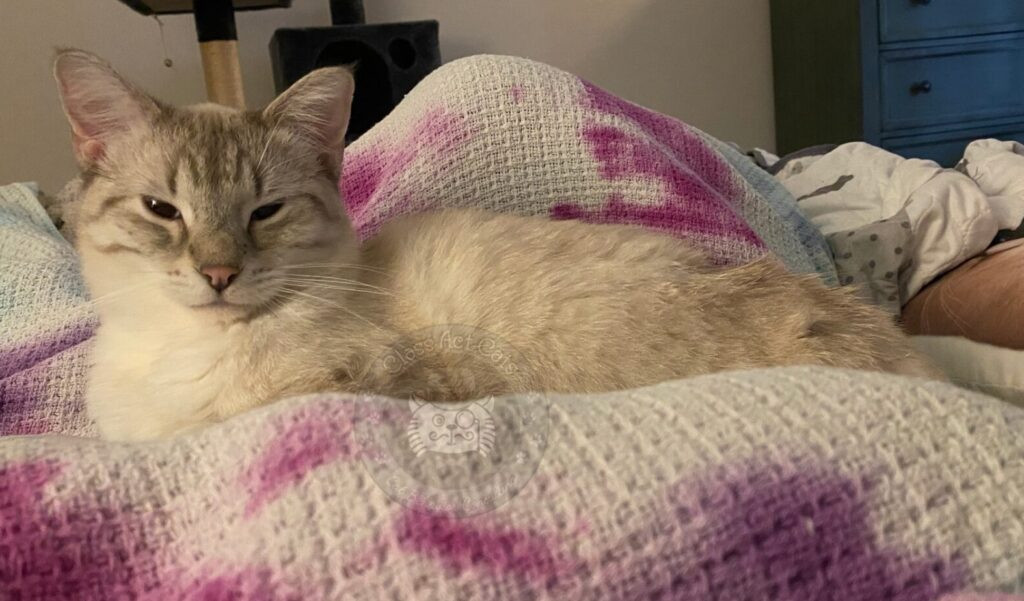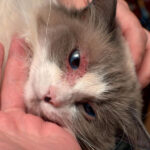As a cat owner, you always want the best for your furry companion. Modern pet technology offers a variety of solutions to make cat care easier and more efficient. While some gadgets are unnecessary, automatic Cat Feeders stand out as genuinely useful tools. Beyond the basic litter box, devices like microchip-activated feeders, cat doors, and water fountains can significantly improve your cat’s well-being and your daily routine. Among these, automatic feeders are particularly beneficial, and we’ll explore why they might be the perfect addition to your home.
It’s crucial to clarify that automatic cat feeders are not a substitute for responsible pet ownership. Leaving your cat completely alone for extended periods, even with a feeder, is not recommended. Cats need daily attention and check-ins. However, for managing feeding schedules and addressing specific behavioral issues while you are home, automatic feeders are incredibly valuable. I personally use one and frequently recommend them to my clients for a variety of reasons.
The Benefits of Automatic Cat Feeders: Solving Common Feline Feeding Challenges
Automatic cat feeders offer a range of solutions for common cat-related issues. The most frequent reason I recommend them is to address early morning wake-up calls from hungry cats. Many cat owners can relate to being abruptly awakened by a meowing cat demanding breakfast! In my own household, one cat in particular is quite insistent about early morning meals.
 Poutine the cat wearing a tie-dye blanket and looking quirky
Poutine the cat wearing a tie-dye blanket and looking quirky
This image shows Poutine the cat wrapped in a colorful tie-dye blanket, showcasing a playful and endearing moment.
An automatic cat feeder removes you from the immediate feeding process, preventing your cat from associating early morning meowing with instant food. The feeder dispenses food at a set time, allowing you to sleep undisturbed. This simple change can dramatically improve your sleep quality and reduce the cat’s learned begging behavior.
Beyond early morning demands, automatic feeders are also effective in managing other feeding-related behaviors. For cats who are overly food-focused or tend to overeat, portion control and meal spacing are key. Feeding smaller, more frequent meals throughout the day aligns with a cat’s natural eating patterns and helps them feel satiated for longer periods. While providing multiple small meals manually can be challenging, an automatic cat feeder makes it easy to distribute food throughout the day, even when you are not at home.
For cats that eat too quickly, consider combining an automatic feeder with puzzle feeders. Puzzle feeders encourage slower eating and provide mental stimulation. Use the automatic feeder for scheduled meals, especially morning or daytime feedings, and incorporate puzzle feeders for other meals. Slow feeder inserts placed inside the automatic feeder bowl are another effective way to slow down fast eaters.
Automatic feeders are also invaluable for cats with medical conditions requiring consistent meal schedules. If your veterinarian or a certified pet nutritionist has prescribed specific feeding times and amounts, an automatic cat feeder ensures precise and timely delivery of meals, supporting your cat’s health and treatment plan.
Potential Downsides of Automatic Cat Feeders: What to Consider
While automatic cat feeders offer numerous benefits, it’s important to be aware of potential drawbacks. One concern is the possibility of malfunction, which could leave your cat without food. This is why relying solely on automatic feeders when you are away for several days is not advisable. Instead, arrange for a pet sitter to check on your cat and the feeder’s functionality daily.
Many automatic feeders are primarily designed for dry food. While wet food compatible options exist, they are less common. If you primarily feed your cat wet food, your choices may be limited. Some wet food feeders require ice packs to keep food fresh, which adds a step to maintenance.
However, some innovative solutions are available. PetLibro, for example, offers a refrigerated wet food automatic feeder that eliminates the need for ice packs. This type of feeder can store multiple meals and keep them chilled for up to three days, offering a convenient option for wet food feeding, especially when you’re away from home for a day.
Mechanical Issues and Design Limitations
Another potential issue is feeder malfunction due to clogging. As mentioned earlier, this reinforces why automatic feeders are not a complete substitute for human oversight, especially for extended periods.
The design and functionality of automatic cat feeders vary. Some models offer limited control over portion sizes and feeding frequency. Generally, higher-tech feeders provide more flexibility, often including app-based control for remote programming and monitoring. However, features and reliability can vary between manufacturers.
Finally, some cats may be initially wary of automatic feeders. The sound of food dispensing might startle sensitive cats. While most cats quickly associate the sound with mealtime, jumpy or easily frightened cats might need a gradual introduction or may prefer alternative feeding methods like puzzle feeders.
Key Features to Look For in Automatic Cat Feeders: Making the Right Choice
Choosing the right automatic cat feeder involves considering several factors to meet your cat’s needs and your budget.
Cost
Budget is always a primary consideration. Automatic cat feeders range in price, with more advanced features often correlating with higher costs. While premium feeders may offer appealing extras, a moderately priced feeder can still effectively meet your core needs. Conversely, the most expensive option isn’t always necessary and might include features you won’t utilize.
Control Over Portions and Scheduling
Different feeders offer varying levels of control. Basic models may use compartments for pre-portioned meals, while others dispense food based on volume or weight. Some feeders simply release food as needed, offering minimal portion control and limited advantages over a regular food bowl.
For electronic feeders, check the increment settings for portion sizes. Also, consider programming options. Can you easily program the feeder directly, or does it offer remote programming via an app?
Wi-Fi Connectivity and App Control
Do you value app-based control? Wi-Fi enabled feeders offer features like remote schedule adjustments, dispensing logs, and sometimes even cameras to monitor your cat during feeding. Feeders like the PetLibro Granary Camera Monitoring Feeder allow you to watch your cat eat remotely.
Ease of Cleaning and Maintenance
Like litter box maintenance, regular cleaning of your cat feeder is essential for hygiene. Choose a feeder that is easy to disassemble and clean. Complex designs can deter regular cleaning, potentially leading to bacterial growth and stale food. Stainless steel bowls are generally easier to clean and more hygienic than plastic. Furthermore, plastic bowls are not always the best choice for cat feeding in general.
Wet Food vs. Dry Food Compatibility
Consider the type of food you feed your cat. Dry food feeders are widely available. If you feed wet food, look for specifically designed wet food automatic feeders. These often incorporate cooling mechanisms to maintain food freshness. While fewer wet food options exist, brands like PetLibro with their Polar model offer refrigerated solutions.
Additional Features and “Extras”
Many automatic feeders come with extra features. These might include voice recording to call your cat to meals, multiple food compartments for different food types, or even activity tracking. While some features are genuinely useful, others are more novelty. Evaluate which features are important to you and if they justify any extra cost. For example, my own automatic feeder has a voice recording feature, which is a fun but not essential addition.
Is an Automatic Feeder Right for Your Cat? Key Questions to Ask
Deciding if an automatic cat feeder is suitable for your cat involves considering several factors:
- Budget and Food Type: Is there an affordable automatic feeder that works with your cat’s food (wet or dry)?
- Desired Features: Does the feeder offer the features you need, such as portion control, scheduling, or app connectivity?
- Maintenance Commitment: Are you willing to regularly clean and maintain the feeder?
- Impact on Cat Interaction: Will using a feeder reduce your direct interaction with your cat in ways you might miss? Ensure you compensate with playtime and attention.
- Enrichment Balance: If replacing some direct feeding with an automatic feeder, are you providing sufficient alternative enrichment, such as puzzle feeders, play, and interaction?
- Behavioral Benefits: Is there a specific feeding-related behavior issue, like early waking or overeating, that an automatic feeder could address?
- Microchip Feeder Alternatives: Would a microchip-activated feeder be more beneficial, especially in multi-cat households where food stealing or diet management is a concern? Consider RFID tag feeders from PetLibro or PortionPro Rx, but note they require your cat to wear a collar.
If you answer “yes” to many of these questions, an automatic cat feeder is likely a good choice. Choosing the right model is the next step. Based on client feedback and personal experience, some brands and models stand out.
Recommended Dry Food Automatic Cat Feeders
The market for dry food cat feeders is extensive. PetLibro feeders are consistently a top recommendation. I personally use PetLibro feeders and find them reliable and feature-rich. Their precise portion control, adjustable down to 1/12 cup increments, is particularly useful for creating smaller, more frequent meals, which is beneficial for weight management and reducing food begging. PetLibro offers a variety of models, including those with cameras.
 A cat sitting in front of two empty automatic cat feeder bowls
A cat sitting in front of two empty automatic cat feeder bowls
This image shows a cat looking expectantly at two empty automatic feeder bowls, emphasizing the anticipation of mealtime.
Enhancing Enrichment with Dry Food Feeders
Dry food automatic feeders can be easily combined with enrichment strategies. To add mental stimulation, incorporate puzzle feeders. Instead of the standard feeder bowl, place a ceramic slow feeder bowl of a similar size where the food dispenses. Alternatively, use a silicone slow feeder insert within the existing bowl. These inserts with raised ridges slow down eating and make mealtime more engaging, even when using an automatic feeder.
Wet Food Compatible Automatic Cat Feeders
Fewer automatic cat feeders are designed for wet food. The primary challenge is keeping wet food fresh and cool. Many wet food feeders use ice packs, like models from Ownpets, which can store up to six meals. However, refrigerated feeders like the PetLibro Polar offer a more advanced cooling solution.
For occasional wet food meals, single-compartment feeders can be useful. The WellToBe feeder combines a dry food hopper with a single wet food compartment and ice pack. Other multi-meal wet food feeders with ice packs are available from brands like Ownpets and Cat Mate.
Ultimately, the best automatic cat feeder depends on your individual cat’s needs and your preferences. While there’s no single perfect feeder for every cat, they can be a highly beneficial tool in the right circumstances.
Need Help with Cat Feeding Behavior?
If you are struggling with cat food aggression or other feeding-related issues, consider scheduling a consultation for personalized guidance.
Set Up a Consultation


